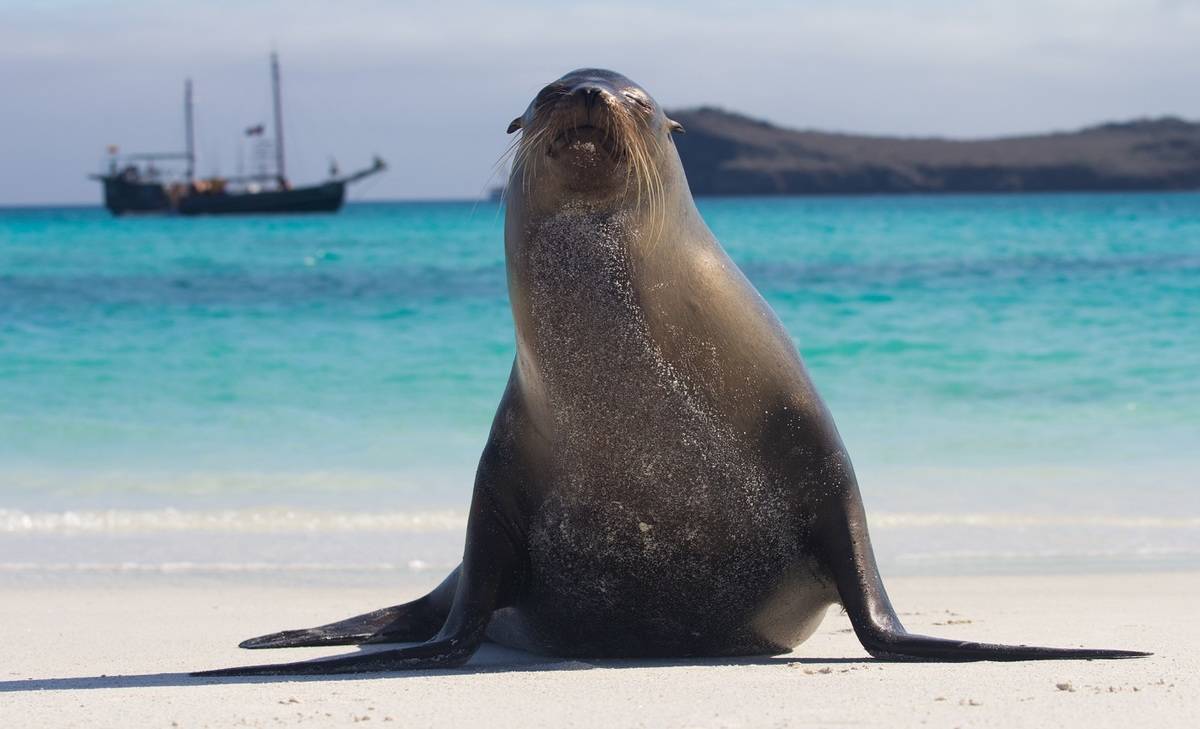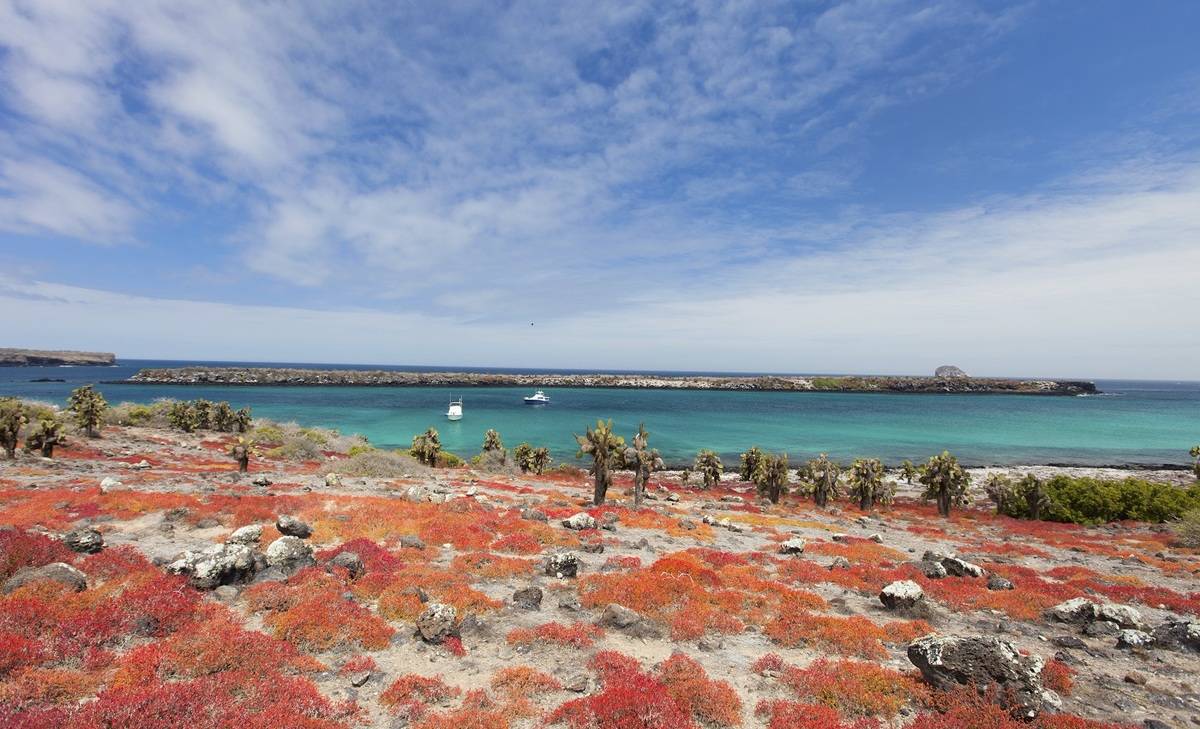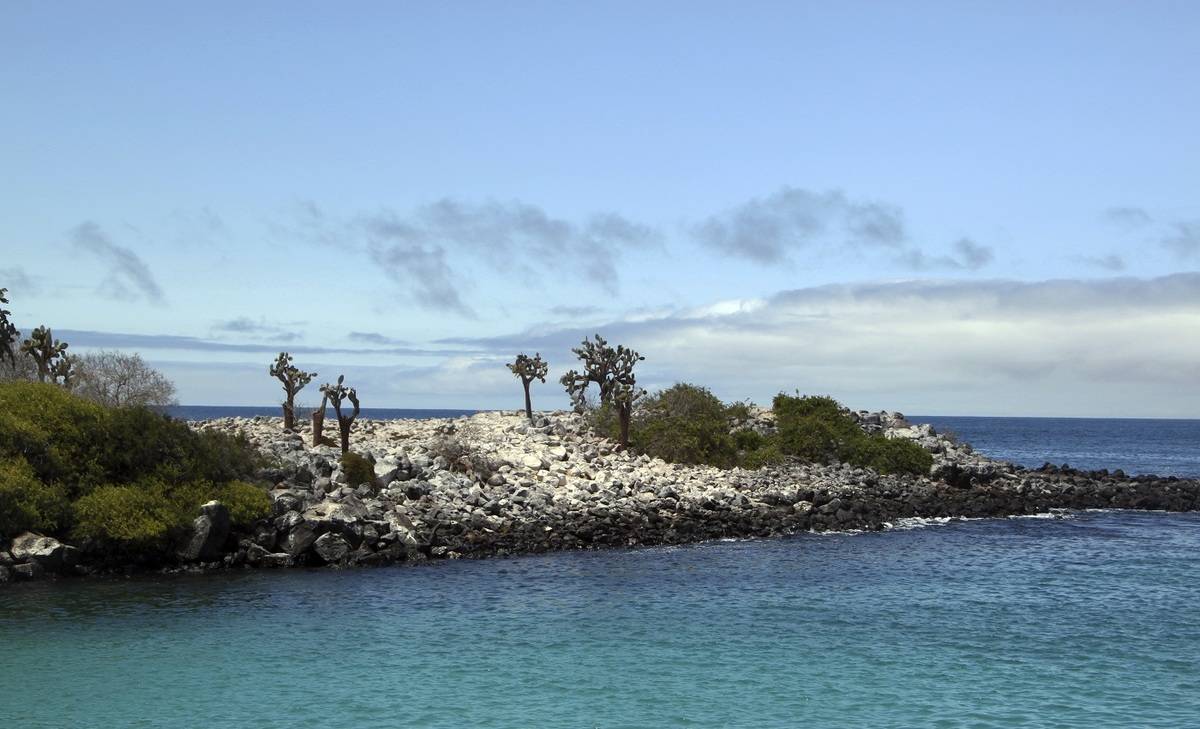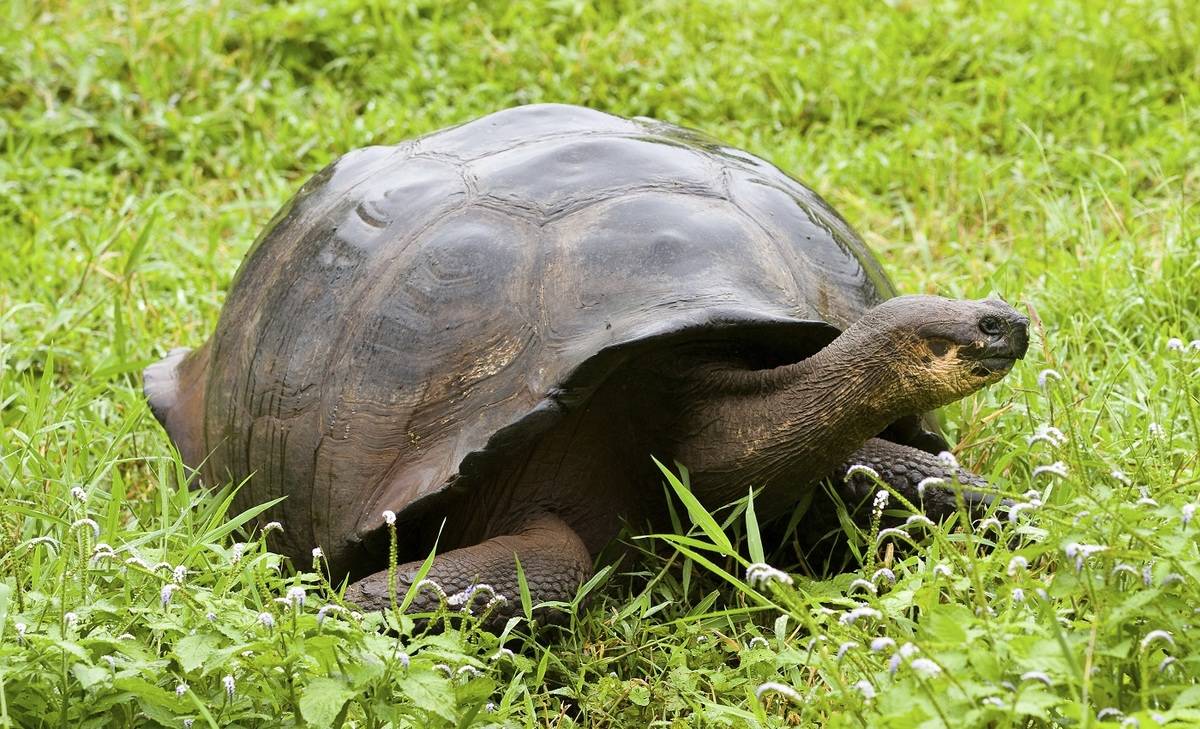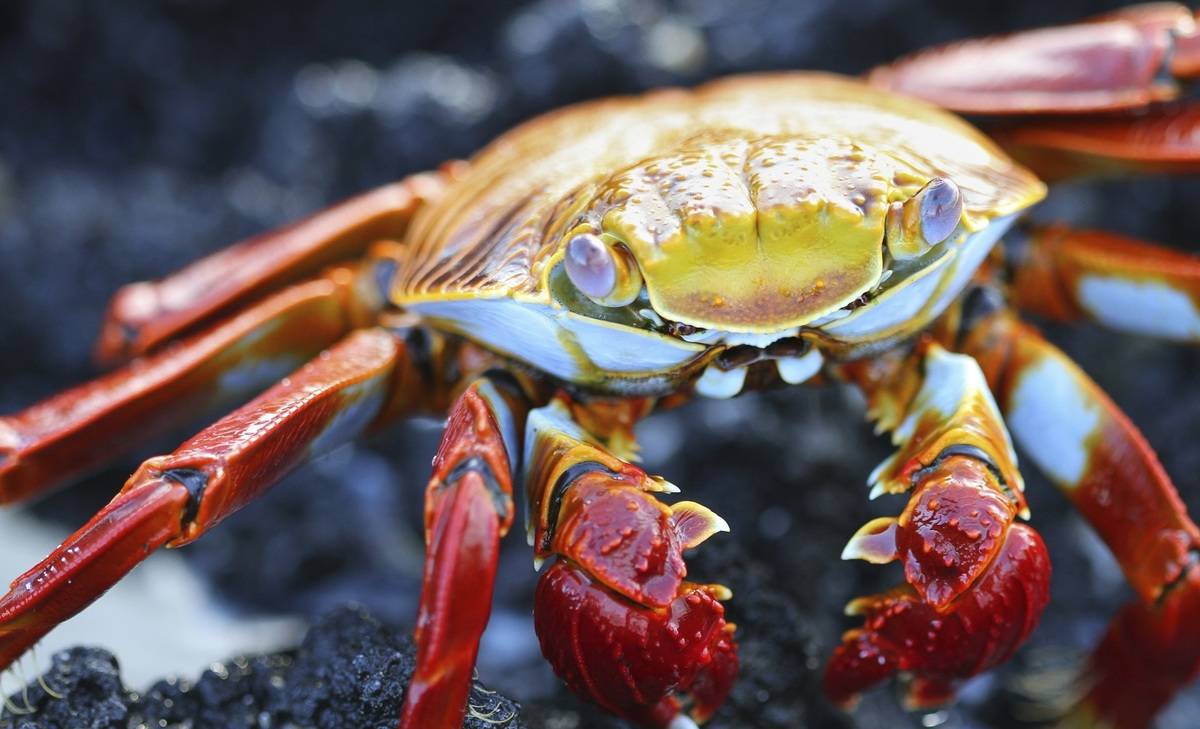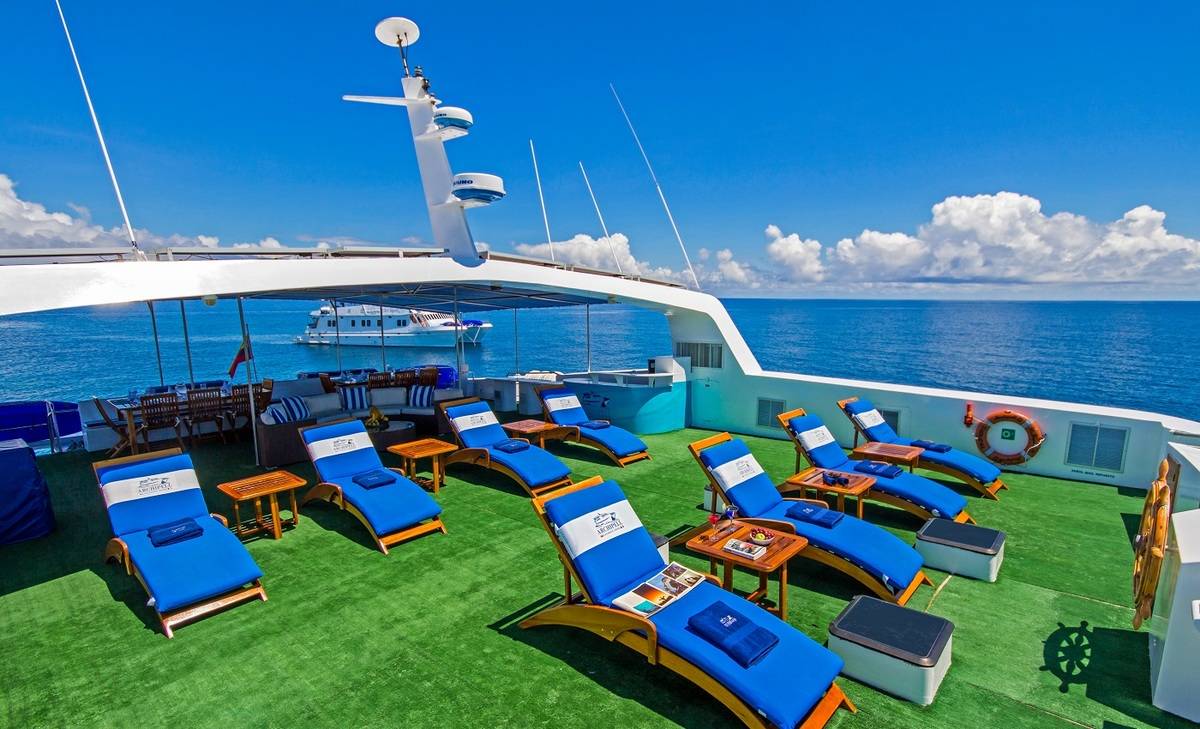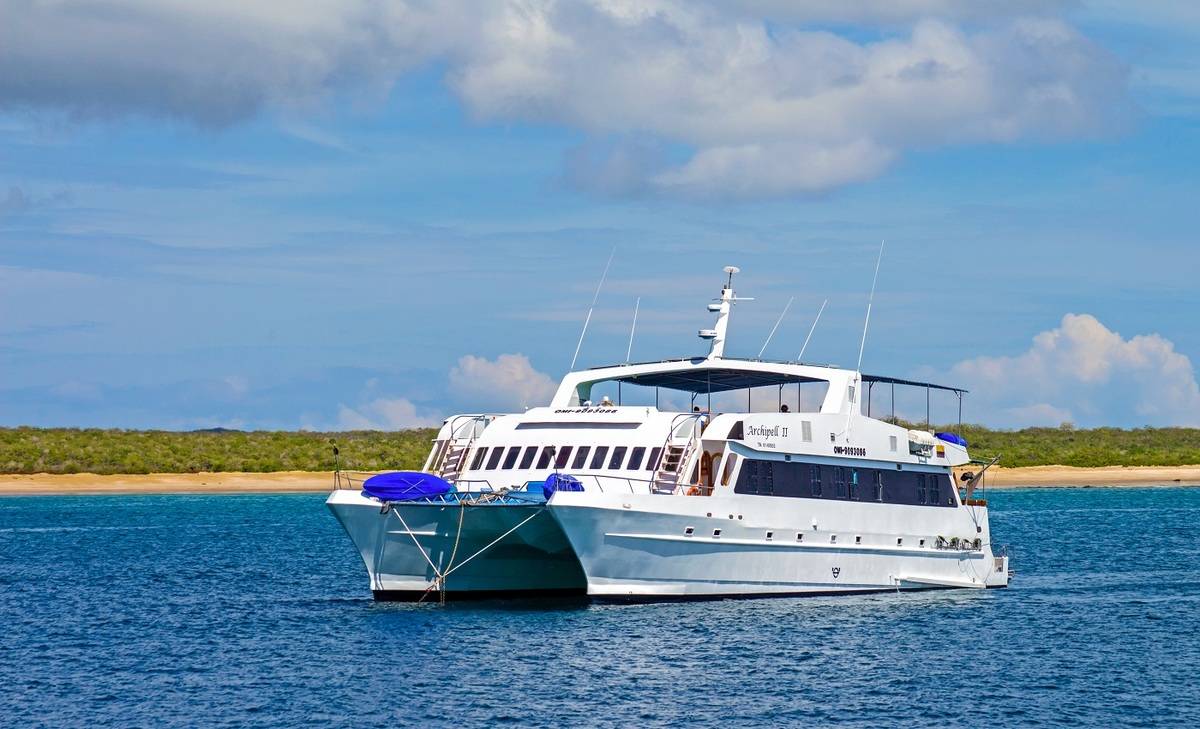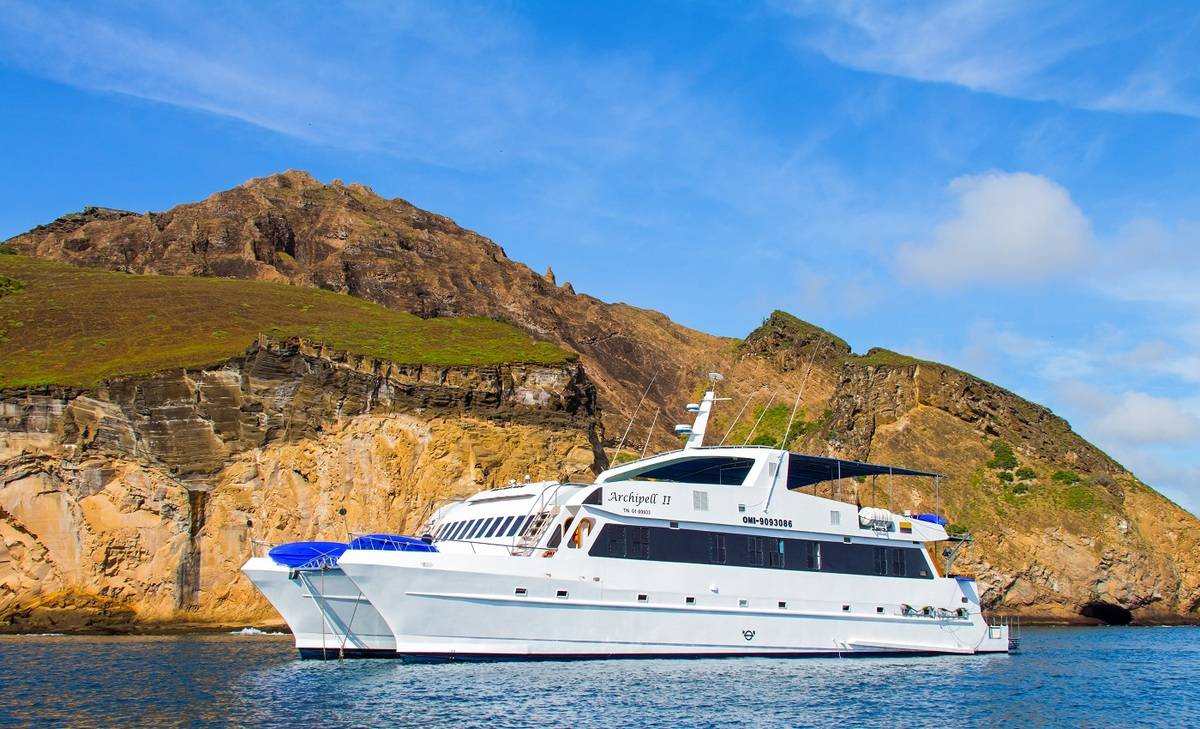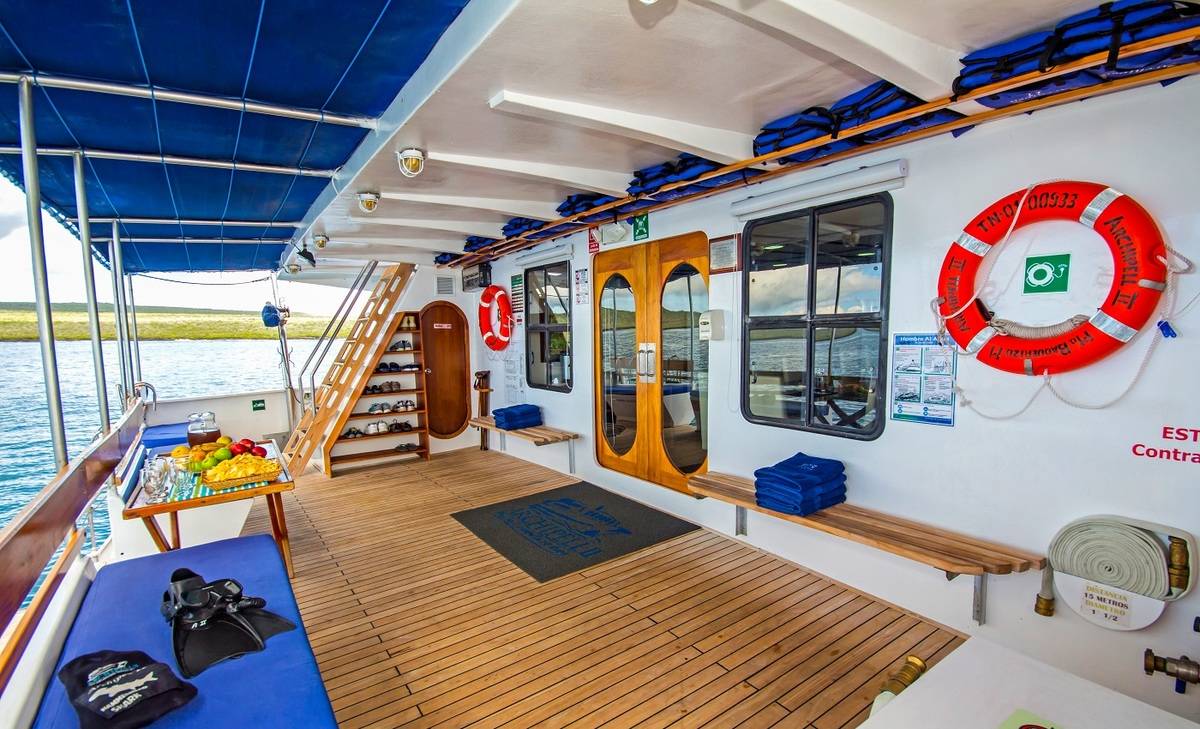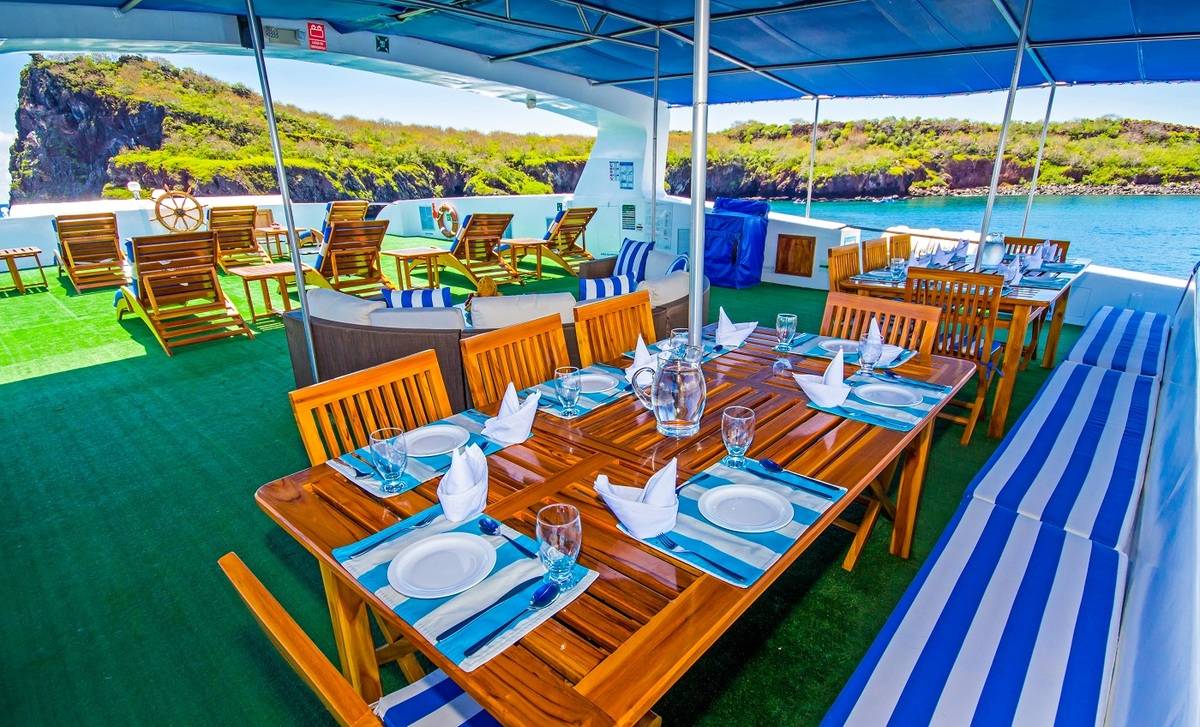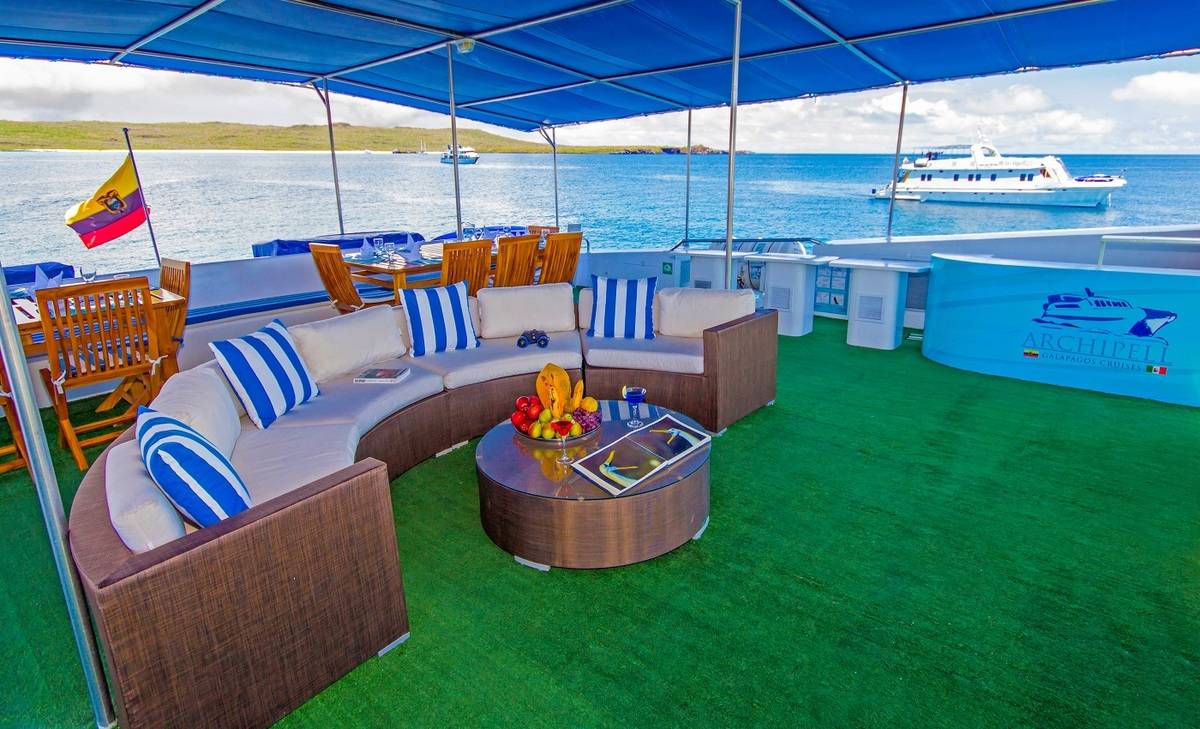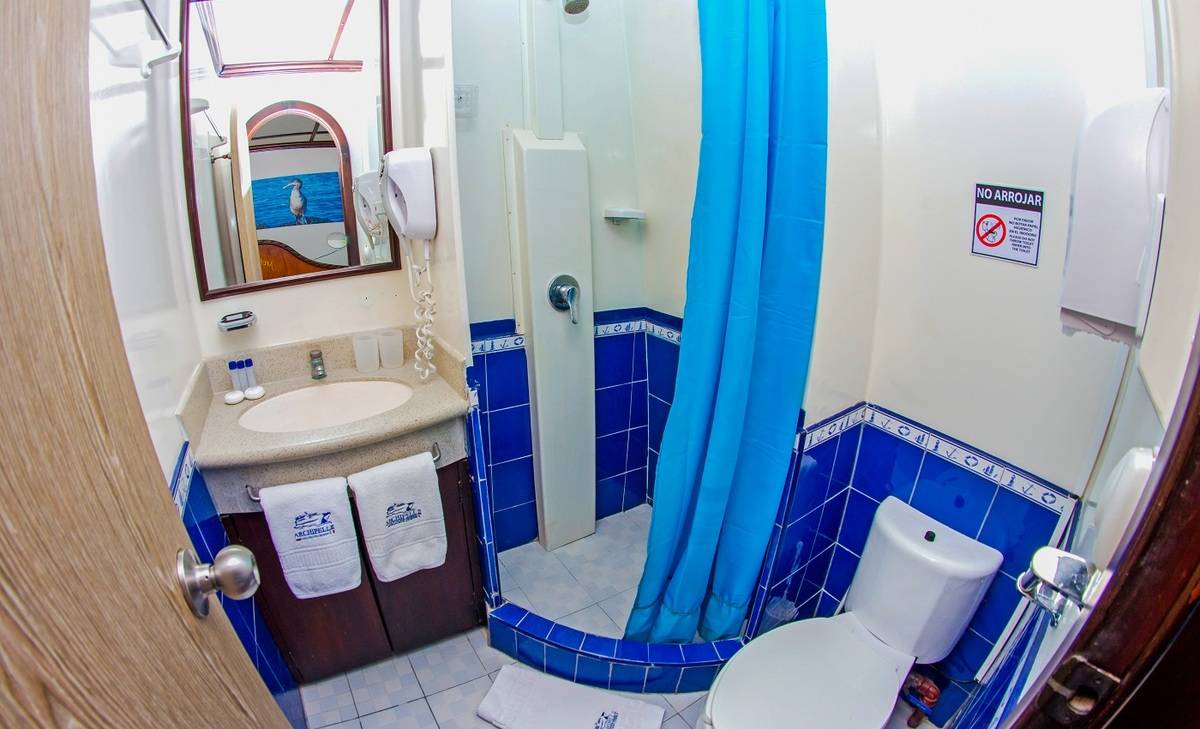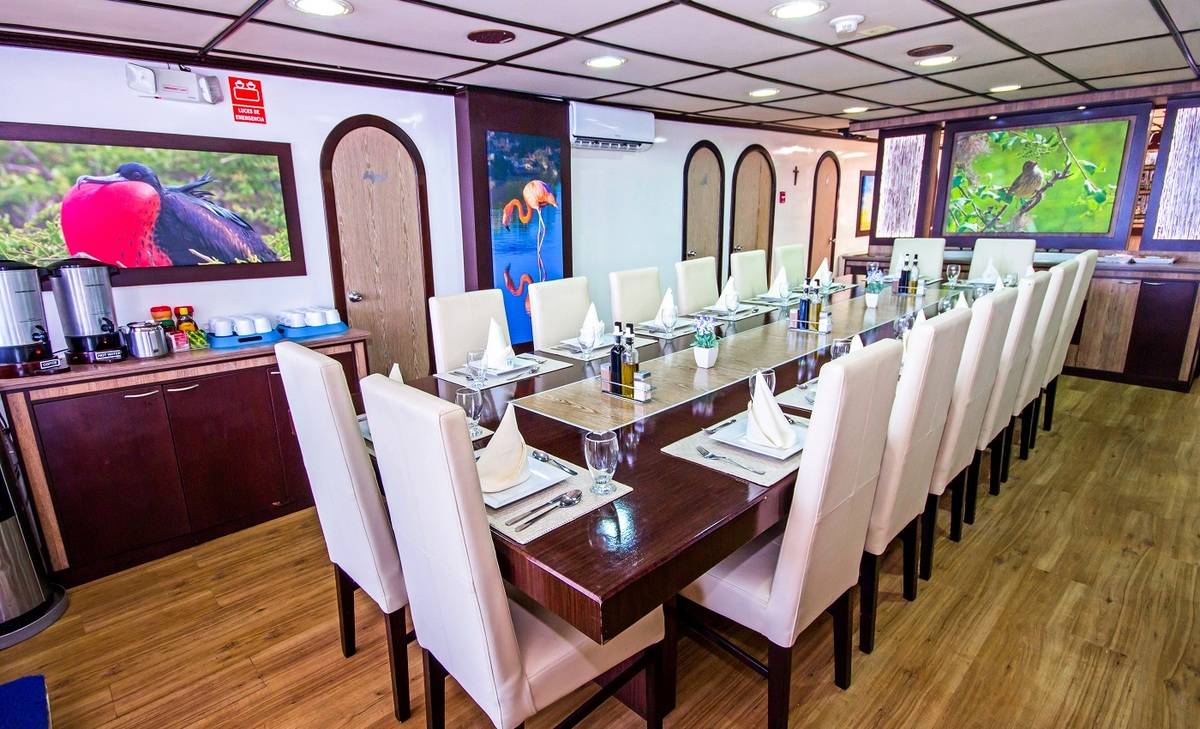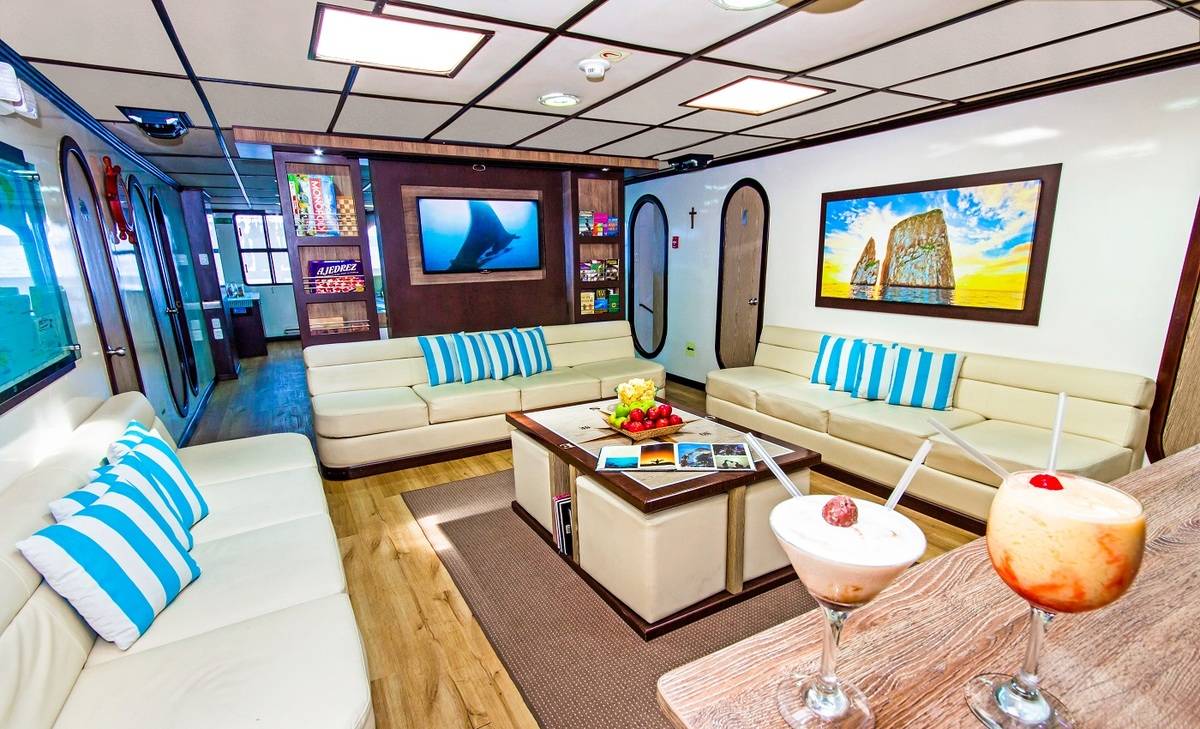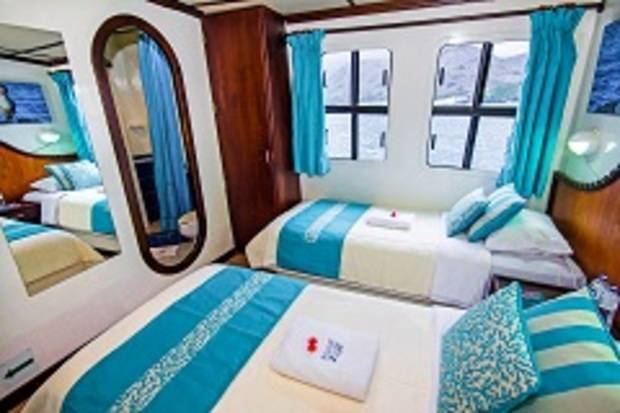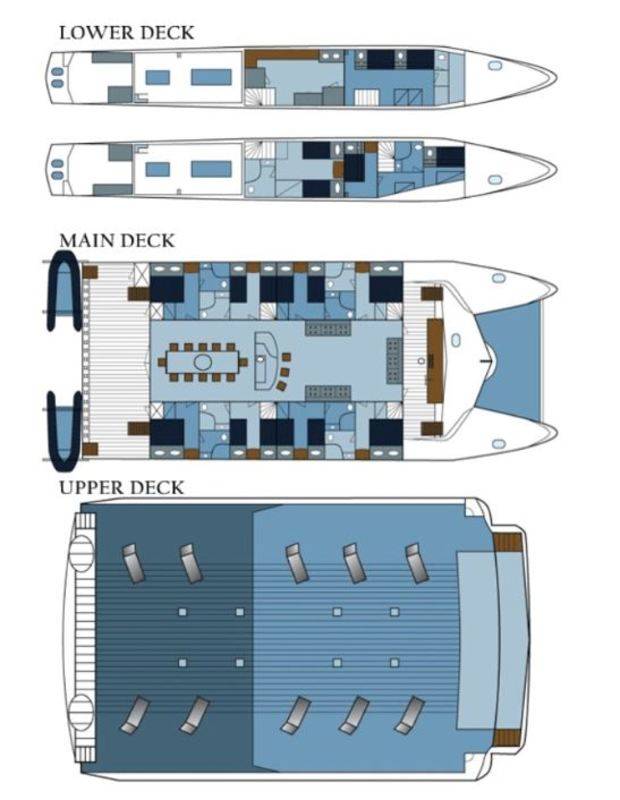Day 1: Arrive to San Cristobal Airport - Isla Lobos
Arrival at San Christobal Airport and transfer in. One of our representative Guides will meet you and transfer you to the M/C Archipell II.
The Lobos Islets beach harbours a colony of Galapagos sea lions. As like other colonies in the archipelago, you can approach nurturing females within a few metres. In the breeding season this colony is also visited by territorial males, defending and mating the harem on their part of the beach. Two other emblematic species also breed here: male blue-footed boobies and great frigate birds who try to impress the females (and tourists) with clumsy dances,
heaving their striking blue feet or blowing up their balloon-sized scarlet pouches. During the breeding season, the fluffy and hungry chicks cry for food, and when their wings get strong enough, they will learn to fly.
Day 2: South Plaza & Santa Fe Islands
South Plaza is located at the east of Santa Cruz Island, and forms part of two islands known as Islas Plazas. Despite its small size, some of the most interesting and outstanding species of the Galapagos are found here. The Plazas land iguanas are smaller than its relatives found on other islands. There are several hybrid iguanas, a result of crossing a male marine iguana and a female land iguana; they are unique, recognizable at first glance by their black/gray color, with a land iguana's crest, but face and tail of the marine iguanas.
Located in the southeastern part of the Galapagos, this island was formed from an uplift instead than from a volcanic origin; this is why it is mostly flat. There are some theories that assure that this could be the oldest island in the Archipelago. Santa Fe is the home of a number of endemic species like the Galapagos Hawk, Galapagos snake, Galapagos mockingbird, rice rats and one of the two species of land Iguanas of the islands. After disembarkation in the beautiful and clear waters, you will be in contact with one of the many sea lion colonies.
Day 3: Chinese Hat - Dragon Hill
Today, you will visit the volcanic islet of Chinese Hat, an island just off the south eastern tip of Santiago Island. Shaped like a Chinese hat, this recent volcanic cone is separate d by a small channel of Turqoise water. Around the islet, you might spot sally light foot crabs and makes for a great snorkelling spot with sea lions and tropical fish.
In the afternoon, visit Dragon Hill, where the largest wild population of Galapagos land iguanas reside.
Day 4: Charles Darwin Station - Depart Baltra
Today, visit Charles Darwin Station. In the tortoise breeding station, you can encounter tortoises of different subspecies, which get prepared for reintroduction to their natural habitats.
Assisted by the naturalist guide and some crew members the dinghy will bring you and your luggage to Baltra, where we take the airport shuttle. Your guide will accompany you until the check-in counters in the departure hall.


